The ugliest orchid in the world tops Kew’s 2020 new species list
Release date: 17 December 2020
- RBG Kew selects 10 highlights from 156 species officially named in 2020.
- The ugliest orchid in the world, a new toadstool from Heathrow Airport and a potential future food from Peru among the showstoppers on Kew’s list.
- Orchids account for over a third of the new species.
- Concerns that several of these rare new species face extinction as they are already threatened by habitat clearance.
Scientists from the Royal Botanic Gardens, Kew and their collaborators around the world have selected their top 10 highlights from the list of new plant and fungal species named in 2020. From a toadstool mushroom found at Heathrow Airport, to (what could be considered) the ugliest orchid in the world to a pretty pink flower with edible tubers; this year’s top picks represent the amazing breadth of new species named every year and highlight the incredible diversity of species out there still to be found and documented.
Approximately 156 plants and fungi were found by RBG Kew and its partners in 2020 in Africa, Asia, the Americas and here in the UK. Some of these new species could be important for people and planet – providing vital income to communities, or the potential to be developed into a future food or medicine, or even just to become the new favourite of keen gardeners. Sadly, several on the list are already considered as under threat of extinction from increasing threats to their natural habitat. Scientific work to document these plants is only the first step to ensuring their future conservation.
Dr Martin Cheek, RBG Kew Botanist and Senior Scientist within the Identification & Naming department says: “In a challenging and difficult year, it’s so thrilling to see botanical and mycological science continue, with a bumper list of incredible newly named species being documented with our collaborators across the world. Among this list are some amazing new finds for science, each with their own unique qualities and potential for humanity. However, the bleak reality facing us cannot be underplayed: with two in five plants threatened with extinction, it is a race against time to find, identify, name and conserve plants before they disappear. We hope this list inspires people to realise the beauty and vital importance of plants and fungi and support Kew’s work to find, document and understand these species so they can be protected.”
This year’s weird and wonderful new species include:
1. Six new toadstools
Six new species of webcap toadstool mushrooms have been named in the UK this year. These six new finds are all from the genus Cortinarius, which is ecologically important in supporting the growth of plants, particularly trees such as oak, beech, birch and pine. This genus also plays a key role in the carbon cycling of woodlands and providing nitrogen to trees. Three were found in Scotland, with two of these named after scientists’ loved ones: Cortinarius britannicus, from Caithness in the Highlands and C. scoticus and C. aurae, from a forest in the Black Wood of Rannoch. Cortinarius aurae, found by Kew mycologist Tuula Niskanen, was named after her daughter Aura. The other three were found in England: Cortinarius ainsworthii, named after Kew mycologist Martyn Ainsworth, who collected the ‘type specimen’ (the exact specimen on which the name of the new species is based) from Devil’s Dyke, Brighton; Cortinarius subsaniosus, found in woods at Barrow-in-Furness; and the sixth species, Cortinarius heatherae (pictured), which was discovered along the river on the boundary of Heathrow airport by field mycologist Andy Overall and named after his wife Heather
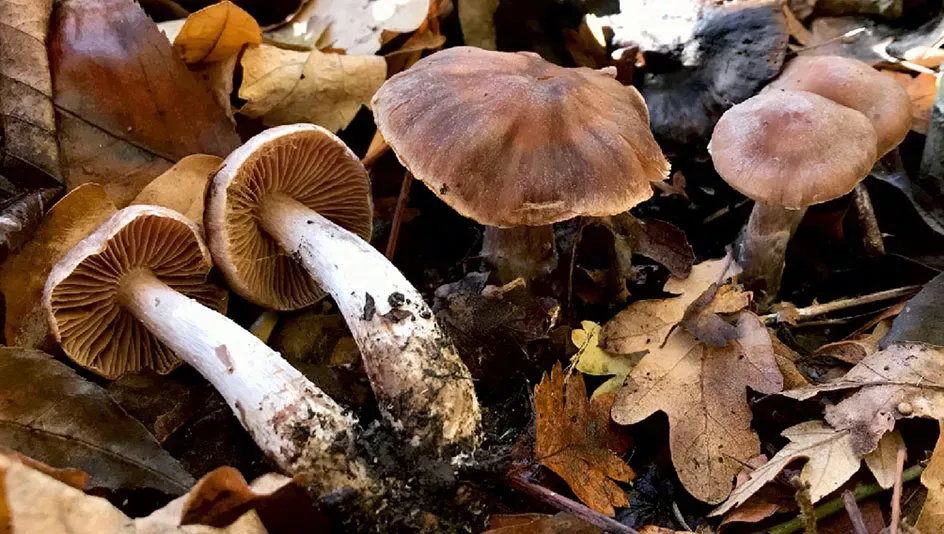
2. New family to science: a strange, heat tolerant and scaly shrub…
A strange shrub was encountered by botanist Wessel Swanepoel in the semi-desert of southern Namibia in 2010. Wessel couldn’t place the shrub in any known genus and when asking for further opinions, neither could anyone else. Wessel called on Kew’s molecular expert Felix Forest and his team for analysis and results showed that the plant’s DNA fitted the cabbage order, but none of the known families in this order. It was not just a new species, but a new genus and a new family named for 2020: Tiganophyton karasense (Tiganophytaceae). This is unique, as while around 2,000 plants are named new to science each year, new families are only published around once a year. The shrub has bizarre scaly leaves and grows in extremely hot natural salt pans, hence its name Tiganophyton, which was derived from the Latin ‘Tigani’ = frying pan, and ‘Phyton’ = plant. Fewer than 1,000 plants of the species are known to exist, from just three locations within a small area which experiences the highest temperatures in Namibia, 36°C, with only 4-6 inches of rain per year.
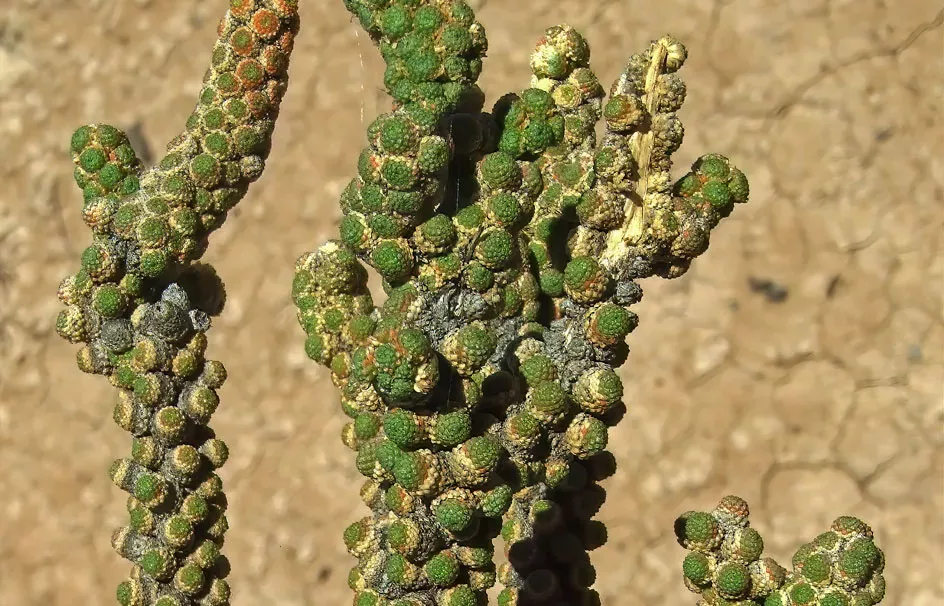
3. 19 new orchids from the tropical paradise island of New Guinea…
An incredible 19 new tree-dwelling orchids, all from New Guinea, were named by Kew’s orchid specialist Dr Andre Schuiteman this year, with help from partners Reza Saputra in Indonesia and Jaap Vermeulen in the Netherlands. The naming of these new orchids has resulted from years of dedicated study from Andre and his collaborators across Indonesia, the Philippines, the USA and the Netherlands, to find out more about the orchids of the world’s most biodiverse tropical island.
The new species include three conventionally attractive species from the Dendrobium genus, including one cultivated behind the scenes in Kew Gardens’ tropical nursery, with spectacular bright golden orange flowers (Dendrobium aurifex - pictured). The remaining 16 new species are from the Bulbophyllum genus, many of which are fly-pollinated, with the more sinister flowers having tufts of hair reminiscent of features of the human face. The species’ Latin names reflect this: ‘moustached Bulbophyllum’, the ‘Bulbophyllum with sideburns’ and ‘the dagger-tongued Bulbophyllum’ (pictured). Many of these orchids have only been found once and some are only known from a single preserved specimen, so scientists do not yet know if they are rare and endangered or occur more widely on the insufficiently explored island of New Guinea.
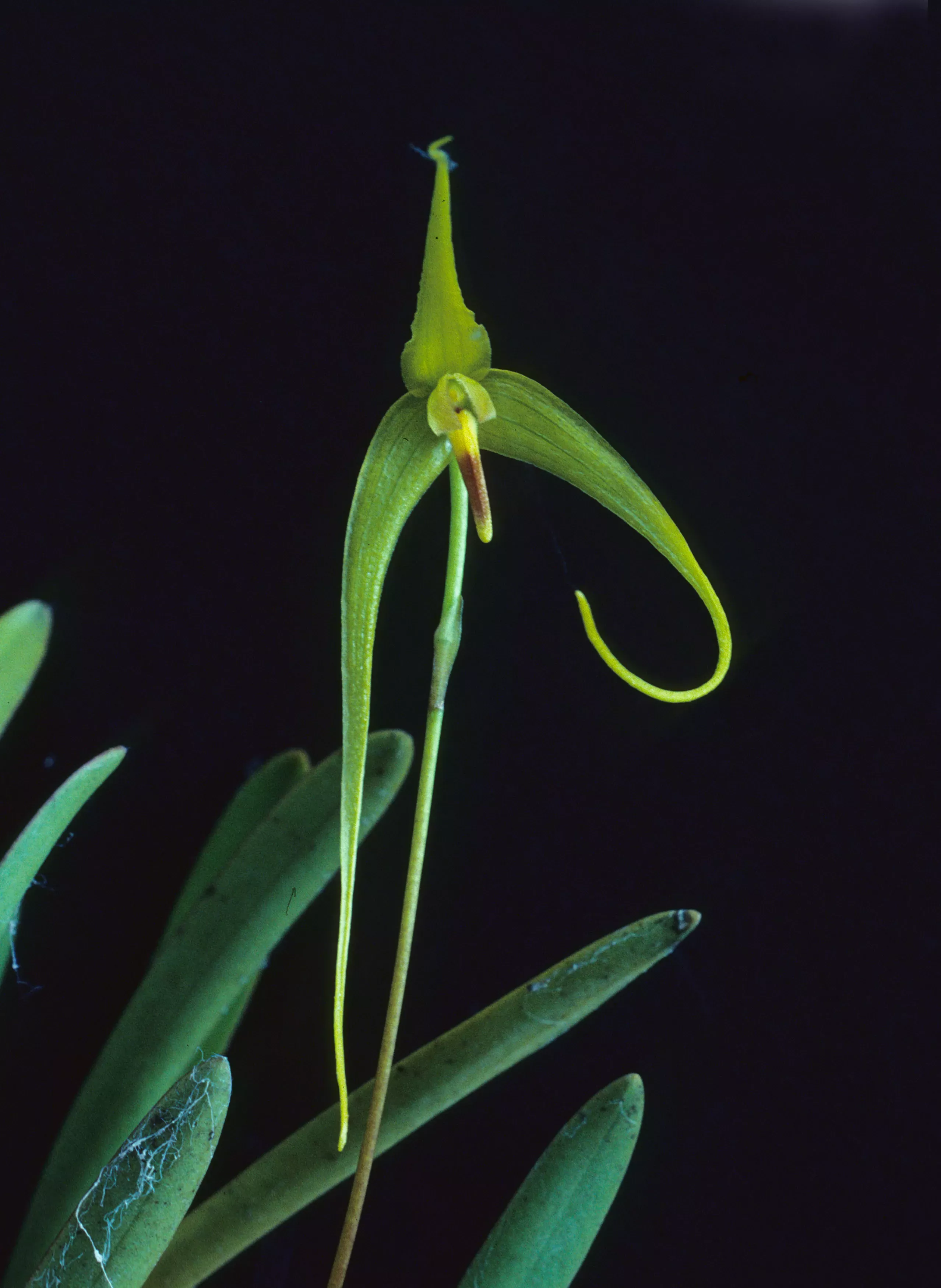
4. Say Aloe to two new succulents from Madagascar…
Two new species of Aloe, the genus famous for Aloe vera, have been found and named by Kew scientists based in Kew’s overseas office in Madagascar this year. Aloe species from Madagascar are usually found in open and sunny areas, but these two new Aloes, Aloe vatovavensis and A. rakotonasoloi, were found in a forest. The Kew team, led by Solofo Rakotoarisoa, found the plants out of flower, so took them back to the capital Antananarivo to cultivate them. Once the flowers had come out, the species could be confirmed as new to science, and named and published. It is not yet known if the succulent leaves of both Aloes have the medicinal benefits found in Aloe vera.
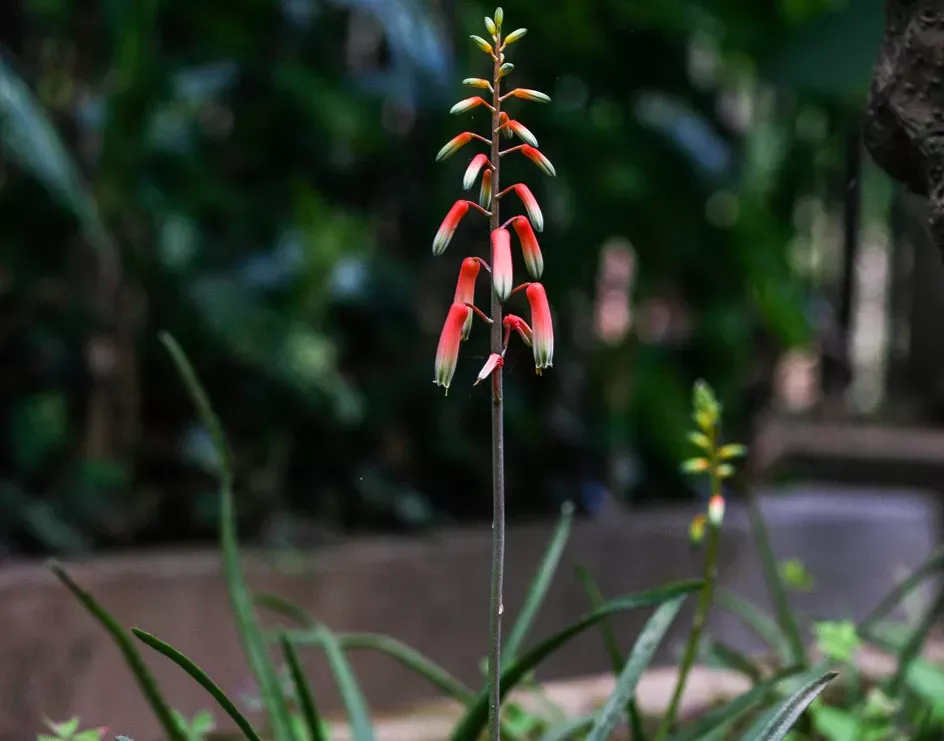
5. The ugliest orchid in the world…
Most people think of orchids as showy, vibrant and beautiful, but Gastrodia agnicellus, newly named this year from a forest in Madagascar, is quite the opposite. The 11mm flowers of this orchid are small, brown and rather ugly. After the G. agnicellus is pollinated, the stalks grow, holding the fruits well above the forest floor so that the dust-like seeds can better disperse. The orchid depends on fungi for nutrition and has no leaves or any other photosynthetic tissue. The new orchid has been assessed as threatened, but with a small range occurring within an already protected national park, the plants do have some protection for now.
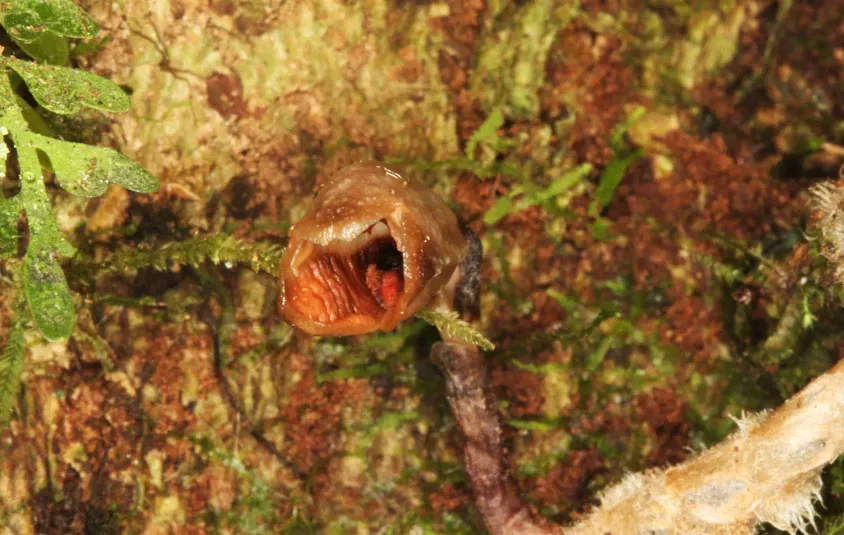
6. More than just a pretty face: new potential new food crop from Peru…
Not all species newly named by scientists are new to humanity as this pretty pink morning glory, Ipomoea noemana, demonstrates. Sometimes, species only just noticed by science have in fact been well-known and even used by local communities for decades; they have simply remained unknown and invisible to the scientific world. This plant, from the genus that gives us the sweet potato, was known to local communities in the high Andes of Peru as ‘yura’. The plant grows among cacti at 2,300m elevation, and features purple tubers up to 10cm in diameter, which can be eaten raw. Locals speak of its sweet taste. The flower was published and named for the Peruvian philanthropist Noema Cano this year by a team of Peruvian & Kew researchers led by Enoc Jara, of the National University of San Marcos in Lima. It has yet to be analysed for its nutritional value and agricultural potential but it is hoped that this attractive plant could have potential as a new food crop.
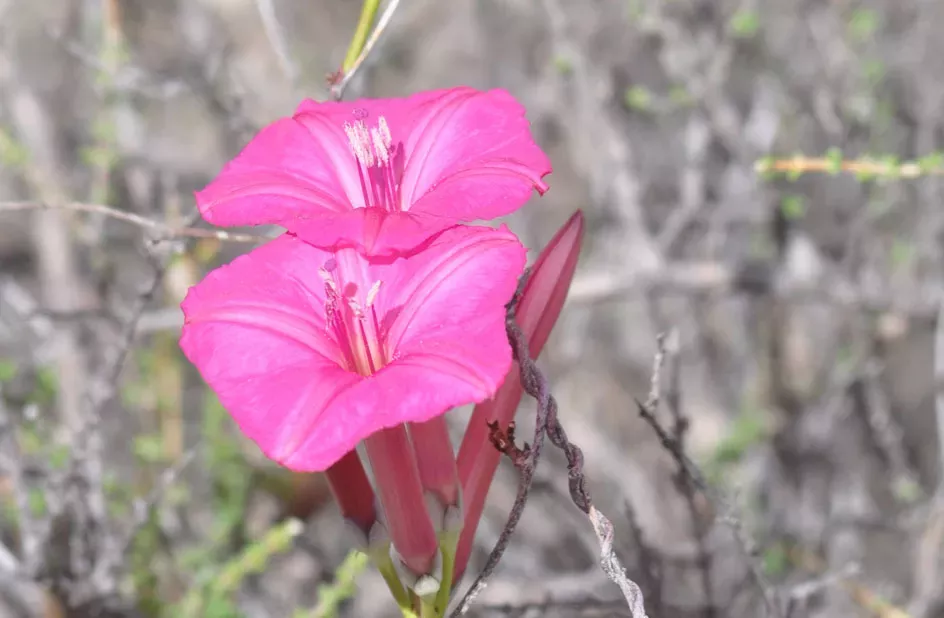
7. Beautiful Brazilian bromeliad threatened by cement manufacturing…
This stunning, colourful bromeliad was discovered in Brazil by Brazilian botanists Pablo Hendrigo Alves de Melo and Gabriel Mendes Marcusso, with Kew scientist Alex Monro in December 2019. The group encountered the flower on a forest-shaded limestone cliff in central Brazil and named it Acanthostachys calcicola, which means ‘growing on limestone’. The scientists believe the plant, which is in the same family as the pineapple, is hummingbird pollinated. Unfortunately, they only found 25 plants of the stunning pineapple relative, despite searching five other limestone areas nearby. Acanthostachys calcicola is only the third species of its genus known to science. Extraction of limestone for cement manufacture is a serious threat for this area, as well as cattle grazing and wood cutting. Naturally exposed limestone areas often have unique, rare plant species but are threatened around the world by quarrying for raw construction materials and for manufacture of cement, which in turn puts the many species restricted to this area at risk.
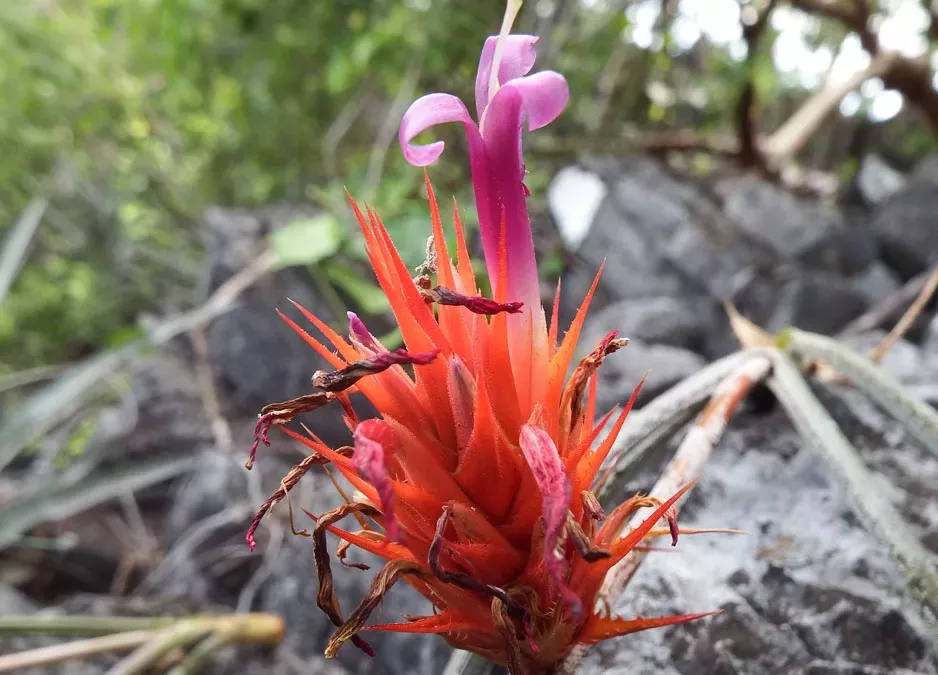
8. Blue gold: new blueberry relative found near to the world’s largest gold mine…
A shrub new to science, Diplycosia puradyatmikai, related to blueberries, was described this year from Indonesian New Guinea. The plant grows on the upper slopes of the highest peak in South East Asia, Mt Jaya, rising to nearly 5000m, near the world’s largest gold mine, Grasberg. Its habitat is stunted montane forest, rich in plants from the rhododendron family. It grows up to 1.5m tall and is characterised by golden-brown bristles on its stems, round leathery leaves and red-tinged bell-shaped flowers. About 120 species are known in the genus and they are usually found on high mountains, from Indochina to New Guinea. The new species was named by a group of Indonesian and Kew scientists led by Wendy A. Mustaqim.
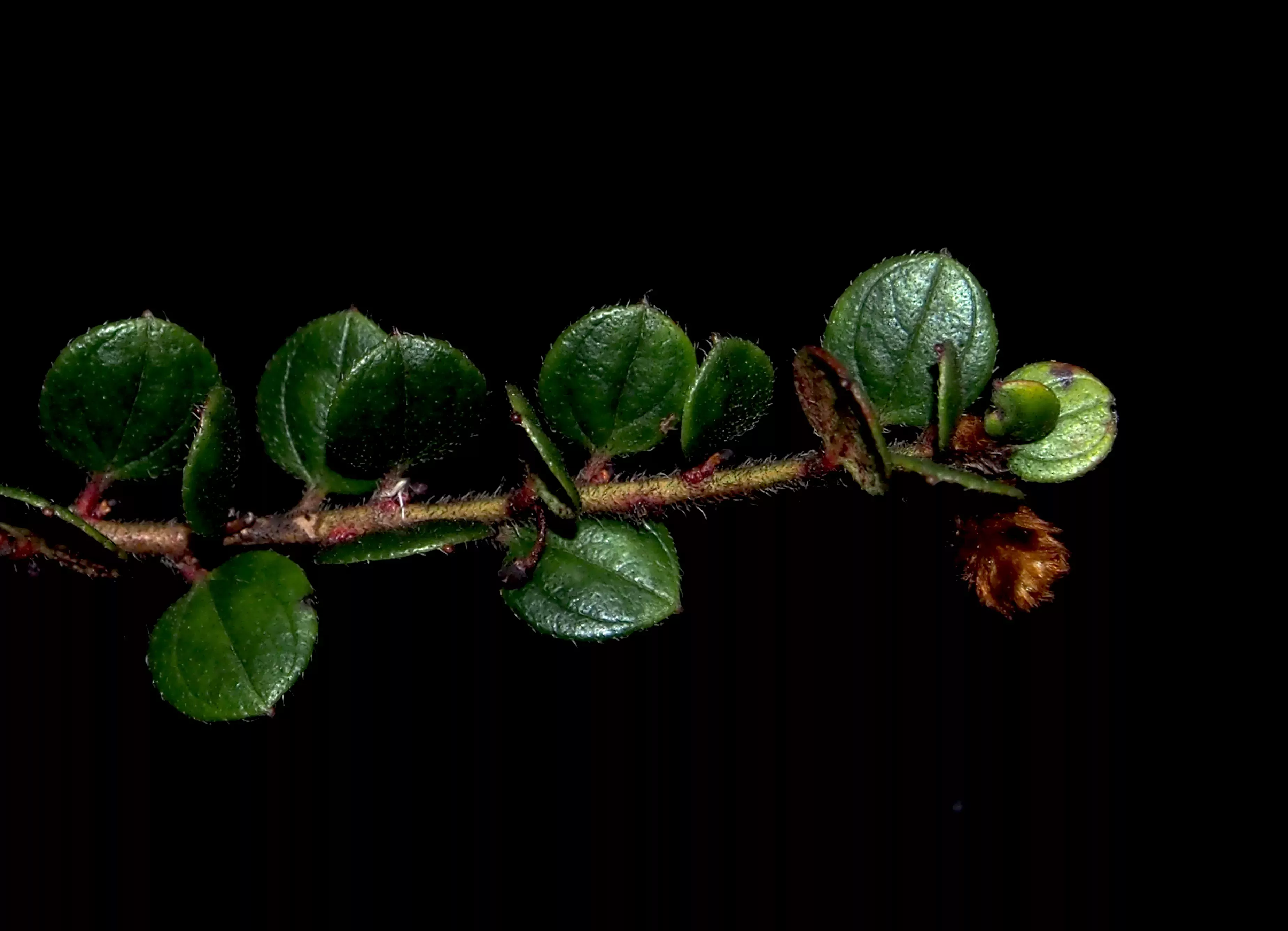
9. New herb from a medicinally important plant family…
Marsdenia chirindensis was newly named in 2020 by Kew scientist David Goyder, who spent 30 years studying this and related plants. There are around 150 species of Marsdenia scattered through the tropics. Classified as a herb, the plant is from the medicinally important family Apocynaceae, which is used by people as dyes, or to treat a number of health issues such as flatulence, gonorrhoea, paralysis, burns, and fungal skin infections.
This species is restricted to the botanically well-known and species-diverse Chirinda forest of Zimbabwe on the border with Mozambique. Only one or two plants are known to exist. The medicinal efficacy of this species has not yet been tested, but it could have great potential.
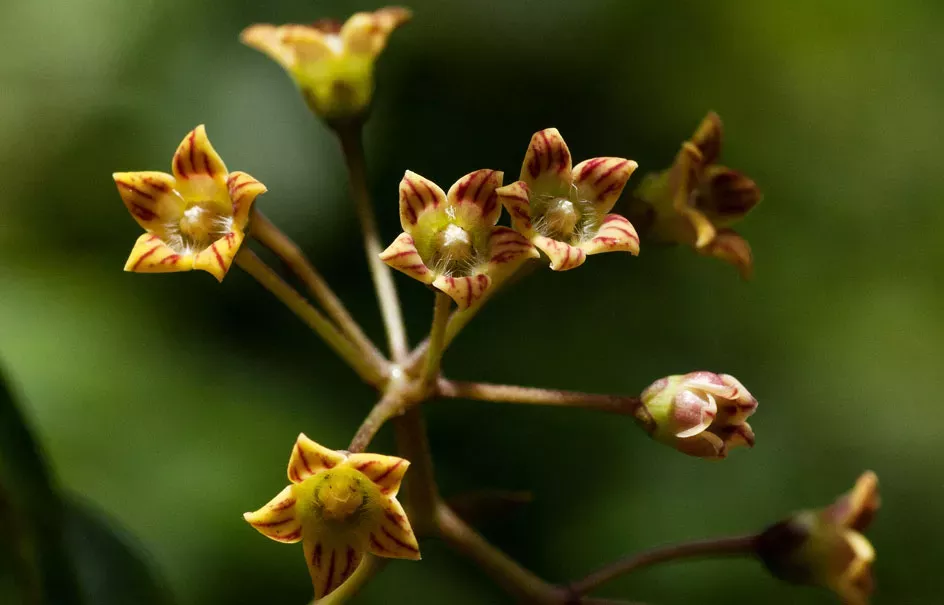
10. Discovered online: spectacular Hibiscus that suits a warming climate…
This spectacular, red-flowered Hibiscus hareyae with jagged petals was discovered online by an Australian Hibiscus specialist Lex Thomson. The beautiful plant, which originates from a coastal scrub in Southern Tanzania, was found by Lex who was studying online images of historic herbarium specimens. He recognised that these specimens had several major features never seen before in the well-known and widely cultivated lookalike species Hibiscus schizopetalus, which is found in Southeast Kenya. Lex named the flower after Dr Hareya Fassil, who has worked on traditional plant-based medicines in Africa. The new plant has great horticultural potential as it can withstand much drier conditions than the well-known Hibiscus schizopetalus.
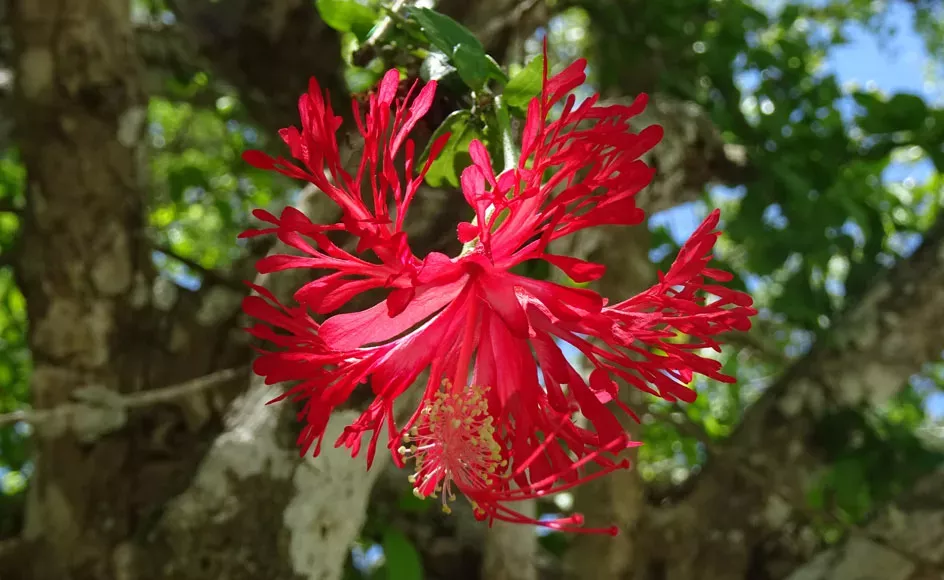
ENDS
For more information or to request an interview please contact pr@kew.org or +44 (0)20 8332 3703 and visit www.kew.org.
· For high-res images, please download from the following link and credit as named: https://we.tl/t-8wHuy1Lrtv
About the Royal Botanic Gardens, Kew
The Royal Botanic Gardens, Kew is a world-famous scientific organisation, internationally respected for its outstanding collections as well as its scientific expertise in plant and fungal diversity, conservation and sustainable development in the UK and around the world. Kew Gardens is a major international and a top London visitor attraction. Kew Gardens’ 132 hectares of landscaped gardens, and Wakehurst, Kew’s Wild Botanic Garden, attract over 2.5 million visits every year. Kew Gardens was made a UNESCO World Heritage Site in July 2003 and celebrated its 260th anniversary in 2019. Wakehurst is home to Kew's Millennium Seed Bank, the largest wild plant seed bank in the world. The Kew Madagascar Conservation Centre is Kew’s third research centre and only overseas office. RBG Kew receives approximately one third of its funding from Government through the Department for the Environment, Food and Rural Affairs (Defra) and research councils. Further funding needed to support RBG Kew’s vital work comes from donors, membership and commercial activity including ticket sales. RBG Kew’s Identification & Naming Department undertakes fundamental taxonomic research and curation for plants and fungi. This year (2020) its scientists published 93% of the 156 new species attributed to RBG Kew in 2020. The remaining 7% were published by other RBG Kew departments. RBG Kew’s Plant Assessment Unit is responsible for accelerating the assessment of plants threatened with extinction and increasing the knowledge available on the conservation status of plant groups currently under-represented on the IUCN Red List. Their project ‘Going the Last Mile’ aims to assess the extinction risk all of species newly named and published by RBG Kew and collaborators in 2020.